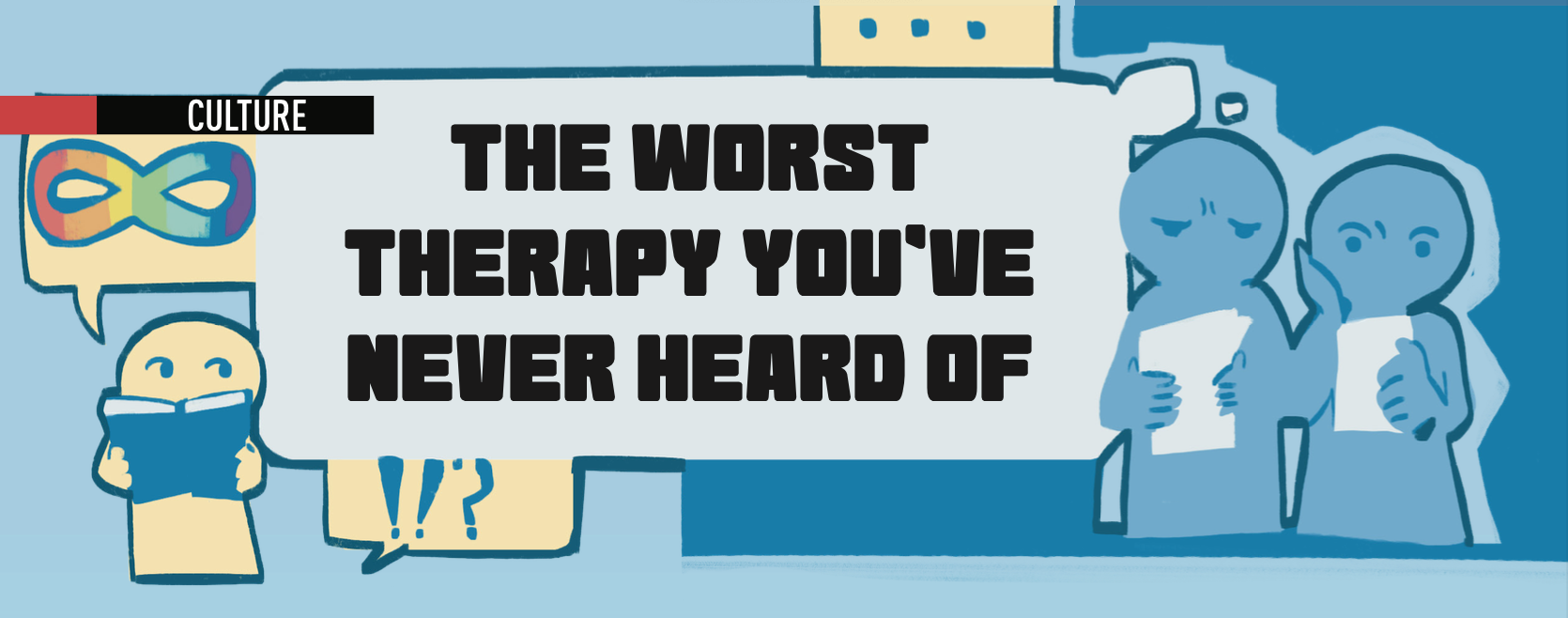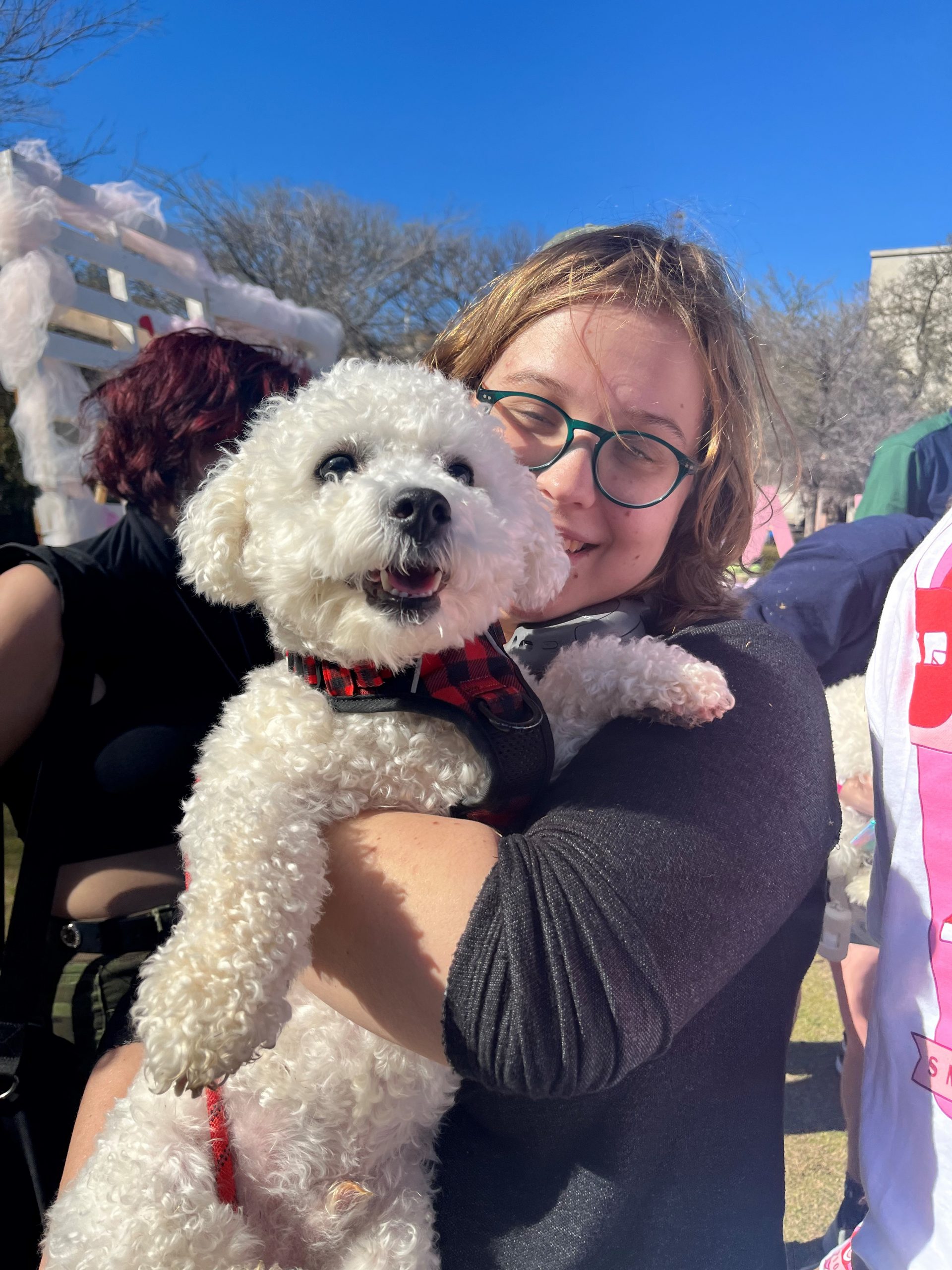
Picture a children’s playroom. There’s a dollhouse, bubble wands, toy trucks, colorful posters. Everything your average kid might want. But this playroom isn’t for the average kid — it’s for autistic children, and they’ll spend up to 40 hours a week in that room. They’ll spend those 40 hours doing the same thing over and over again. They’ll be reprimanded for lining their trucks up instead of ramming them into each other, or coached on how to make eye contact while they tell a parent ‘I love you’.
Short for Applied Behavioral Analysis, ABA is the form of therapy most recommended to parents of autistic children. Testimonials cite ‘finally having a real conversation with their kid’, skyrocketing test scores, and kids who will — at long last — hug them and thank them for all their hard work. These clinics will promise you that ABA is nothing short of miraculous. It sets kids up for success, it alleviates parental woes, and at $17,000 a year on average, it’s a great business to get into. It almost sounds too good to be true.
It is.
The insidiousness of ABA starts in its marketing, which is aimed towards scared parents. Parents of newly diagnosed autistic children are often devastated— the life they had envisioned for their kids has suddenly gone up in smoke. And standing there, ready to turn that devastation and fear into cold, hard cash, is ABA, telling parents that their worst anxieties will come true. Their child has been stolen away from them by the demon called autism, and that their one and only savior is ABA. ABA can ‘fix’ it, make your kid normal enough to go to school and stop doing that weird thing with their hands, and kiss your pushy aunt on the cheek like she insists every time you see her. It’s a classic grift — take an anxious group of people, justify their anxiety, and then sell the kindling to burn their strawman.
So, that’s the marketing, but what about the treatment? How can such an effective treatment be anything other than a blessing to parents and kids alike? ABA runs on the principle of operant conditioning, or trying to provoke a specific behavior by connecting it to a certain stimulus. It’s how dogs are trained — do tricks, get treats. Bark at the neighbor, get put in the kennel. Maybe the right way to go isn’t treating children like dogs — and the science agrees. According to a 2018 study by H. Kupferstein, autistic people exposed to ABA therapy from a young age are 86% more likely to develop post-traumatic stress symptoms, with almost half of all ABA-exposed autistic adults experiencing PTSS. That statistic is hardly shocking once you dig into the specifics of ABA tactics. RBTs (registered behavioral technicians) can teach harmless skills like asking to use the restroom, but even ‘good’ ABA clinics can get as dark as physically restraining kids who are trying to harmlessly stim, or make repetitive calming motions. Common practice includes trying to trigger a meltdown intentionally to attach negative consequences to it. Even positive reinforcement can be damaging: comfort items and foods can be denied at home and only provided during ABA, in order to try to gain compliance and to encourage an attachment to a kid’s RBT.
Because of the way it’s sold, many ABA clinics consider their clients to be the parents, not the patients. Tragically, this can lead to kids being taught ‘skills’ that range from useless to actively harmful. Forcing kids to perform physical contact like hugs regardless of their comfort level sets them up in the long-term to not have boundaries, say no, or report sexual harassment if it does happen. They’ve been taught that their comfort is less important than other people’s expectations for physical contact. And because from the start, their personal feelings about touch were disregarded due to parent’s anxieties about their kids not loving them, they can end up in massive danger.
Many of the behaviors ABA targets fall under the category of ‘masking’. Masking is the practice of suppressing autistic traits and behaviors to appear neurotypical. Depending on how a person’s autism manifests, that can mean making physically painful eye contact, wearing painful clothes, eating foods that cause distress, and otherwise bottling up stress caused by not expressing oneself. According to a 2020 study by SA Cassidy, masking is associated with higher rates of suicidal thoughts and behaviors. Very little of what is taught in ABA is helpful to a kid in the long term, it’s incredibly detrimental. It’s a long, exhausting process — as often as 20-40 hours a week in 2-4 hour periods. That’s an insanely extensive amount of time for a little kid to be kept in a room, forced to do one or two tasks over and over again that range from confusing, to uncomfortable, to even painful.
ABA is administered by RBTs. Now, before working alone with highly vulnerable, impressionable children, these highly trained professionals need to go through a rigorous— um… 5 days. 40 hours of training. 5 days of training to work with kids on a wildly varying spectrum, with full permission to go as far as putting their hands on kids to prevent certain behaviors. That is shockingly little training — it sounds more like an entry-level position than a highly sensitive one.
Hi, psych majors.
ABA therapy is a common way for psychology students to get medical hours. I’ve had people tell me that they ‘work with cute little autistic kids’ because they don’t understand what they’re doing to those kids they claim to love so much. I’ve seen job offers posted for ABA clinics with multiple lawsuits against them because of mistreatment. It seems that this is the only option for psychology majors seeking experience. A lot of undergrad RBTs want to later become therapists or aides for difficult kids in school. They take the position with good intentions, often unaware of the negative long-term consequences of their actions. They usually don’t focus on the experiences of the kids when those kids aren’t outwardly distressed in ways they recognize. Beyond that, the actions of autistic kids are often pathologized and attributed to their autism. A professor I had once described to the class that, compared to a neurotypical child’s giggling, when an adult gets in an autistic child’s face the child will ‘act inappropriately’ by jerking their face away. I don’t know about you, dear reader, but if someone gets in my face without warning I will also jerk back, step away, or otherwise react negatively. Autism gives a drastically different perspective on life, with its own disadvantages and advantages, but when we assume that a crying autistic child in ABA is crying because of their autism and not because they’ve been in a room they can’t leave for 3 hours with someone who won’t listen to them, that’s how we end up with RBTs who see ABA as working with cute autistic kids and not a sincere threat to the wellbeing of the kids who go through it. The whole thing makes me sick to my stomach. Undergrad altruism, parental terror, autistic expression. All exploited by a multi-million dollar industry with the ultimate goals of profit and conformity.
For any psychology majors reading this — I’m sorry. I’m sorry that when you look for jobs on Handshake or Indeed, 60-80% of them are RBTs. I’m sorry that your chosen field seems to have a moral bar of entry that you may or may not be willing to clear. I’m sorry that your cheap labor is being exploited by a massive industry that turns desperate college students, vulnerable parents, and autistic children into profit. Alternatives that I can suggest for you are pivoting towards searching for entry-level positions in social work if holistic altruism is important to you, or seeking out research positions if that’s where your area of interest lies. I promise, there are alternatives. If you currently work at an ABA clinic, I’m not judging you, but I encourage you to think critically about the treatment you administer.
For parents of autistic children: I’m sorry for you too. You have been treated like acceptable casualties in a fight for profit. Your paranoias have been magnified to get you to buy into an exploitative system that craves your money and puts your child in the hands of barely trained technicians administering possibly harmful therapies. ABA has cornered the market so completely it may feel like you have no other options. I promise that’s not true. Search for autistic voices, instead of neurotypical ones. When seeking treatment, autistic organizations suggest focusing on where your specific child struggles — speech and language therapies for kids who struggle communicating, and physical therapies for children with dangerous stims. Occupational therapy can be a really solid, holistic option that aids kids with sensory issues — in large part because it seeks to help kids build environments that allow them to thrive, instead of forcing them to change.
Autistic people, I’m the most sorry to you. A fundamental part of you has been turned into an enemy to extinguish. You have been dehumanized, ostracized, ignored. Regardless of your place on the spectrum (high support, low support, or somewhere in between) you deserve to be understood instead of forced into an alien idea of ‘normalcy’ so that the people around you can be more comfortable. I’m sorry if people around you have made you feel like a burden, or like you are less than you should be. Your perspective and experience are unique and valuable.
Parents of autistic kids struggle, especially after diagnosis. Disappointingly, instead of being encouraged to be optimistic and willing to adapt to their kids, structures like ABA therapy accommodate the parent instead of the child, encouraging assimilation to the status quo instead of building accommodation tools that children can use. To be clear — the parents are being preyed upon, their parental anxieties for their child sharpened into weapons in the ‘fight against autism’. Psychology undergrads get dragged into this fight as well, desperate for hours and lacking understanding of what exactly they’re signing up for, especially since ABA has seemingly cornered their job market. It sucks. It is a tragedy in pieces orchestrated by thousands of well-meaning people in an echo chamber that locks out autistic voices, whether spoken, written, or communicated via alternative communication devices. At the end of the day, that’s who people seeking to help their autistic children should listen to: autistic people. Because that’s who matters most.

Comments